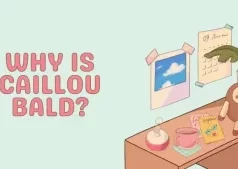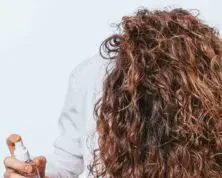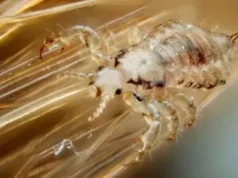Split ends happen when your hair’s outermost layer is harmed. Sadly, managing them is the most difficult aspect of any hair care regimen.
There are consequences to not trimming your split ends, whether you have straight or curly hair. As a result, we compiled some advice for managing and avoiding them.
Split ends tend to give hair a lifeless, knotted, and generally miserable appearance. They can even go up the hair shaft if untreated, leading to increased hair loss.
Trims are typically skipped by people who want to keep their length. But, more severe injury might even call for shorter hairstyles.
Having beautiful and healthy hair is a desire shared by many, but split ends can often stand in the way of achieving that goal. Dealing with split ends is crucial for maintaining the overall health and appearance of your hair. In this article, we will explore the causes and characteristics of split ends and delve into the significant impact they can have on your hair health.
Understanding Split Ends: Causes and Characteristics
Split ends, also known as trichoptilosis, occur when the protective outer layer of the hair shaft, known as the cuticle, becomes damaged or wears away. As a result, the inner layers of the hair, including the cortex, are exposed, leading to splitting and fraying at the tips of the hair strands
Also Read : Do Braid Helps Your Hair to Grow
Do You Really Need to Cut Split Ends?
Yes, cutting split ends is necessary for maintaining healthy hair. Once the hair strand develops a split end, the damage cannot be repaired on its own. If left untrimmed, split ends will continue to travel up the hair shaft, leading to further breakage and damage. Cutting off the split ends is essential to prevent the damage from spreading and to maintain the overall health of your hair.
Can Split Ends Heal Without Cutting?
No, split ends cannot heal on their own without cutting. Unlike the skin, hair is not a living tissue, and once the cuticle layer is damaged, it cannot repair itself. While there are various hair care products claiming to “mend” split ends temporarily, these products only provide a cosmetic effect by temporarily sealing the split for a short time. The only effective and permanent way to get rid of split ends is to trim them off.
Will Your Hair Still Grow if You Have Split Ends?
Yes, your hair will continue to grow even if you have split ends. Hair growth originates from the hair follicles located in the scalp. The presence of split ends on the hair shaft does not affect the growth process at the root level. However, as the hair grows, the split ends can cause breakage, which might lead to the appearance of slower hair growth due to the hair’s reduced length.

What Will Happen If You Don’t Cut Your Split Ends?
If you choose not to cut your split ends, several consequences may arise:
- Damage Progression: Split ends tend to worsen over time, as the damage can spread up the hair shaft. This can lead to more extensive breakage and damage, making your hair look even less healthy and more difficult to manage.
- Limited Hair Growth: As the split ends continue to break, it can give the impression that your hair isn’t growing at the desired rate, even though it’s the damage causing the reduction in length.
- Frizzy and Unruly Hair: Split ends can make your hair look frizzy, dull, and unkempt. This can affect the overall appearance and manageability of your hair, making it harder to style.
- Difficulty in Styling: Hair with split ends can be challenging to style since the damaged ends may not hold styles well and can lead to tangles and knots.
- Thinning Hair: Prolonged neglect of split ends can result in thinning hair, especially at the ends, due to the constant breakage.
To maintain healthy hair, it is crucial to trim split ends regularly. Getting your hair trimmed every 6 to 8 weeks, or as needed, will help remove split ends, prevent further damage, and promote healthy hair growth. Additionally, adopting a gentle hair care routine, minimizing the use of heat styling tools, and using nourishing hair products can help prevent split ends and improve the overall health and appearance of your hair.
There are various factors that contribute to the development of split ends:
- Mechanical Damage: Rough handling of hair during brushing, combing, or towel-drying can cause the cuticle to fray and split.
- Heat Styling: Regular use of hot styling tools like flat irons, curling irons, and blow dryers can weaken the hair’s structure, making it prone to splitting.
- Chemical Treatments: Excessive use of harsh chemical treatments, such as hair dyes, perms, and relaxers, can damage the cuticle and lead to split ends.
- Environmental Factors: Exposure to environmental stressors like sun, wind, and pollution can also contribute to hair damage and the formation of split ends.
The characteristics of split ends include the visible splitting and fraying of the hair shaft. Affected strands may appear dull, dry, and brittle. If left unaddressed, split ends can travel up the hair shaft, causing further damage and weakening the overall hair structure.
Impact on Hair Health: How Split Ends Affect Your Hair
Split ends can have several detrimental effects on the health of your hair:
- Breakage: When hair ends split and fray, they are more prone to breakage, leading to shorter hair and a lack of length retention.
- Limited Growth: If split ends are not trimmed, they can travel up the hair shaft, causing more damage and hindering healthy hair growth.
- Texture and Appearance: Split ends can make hair look frizzy, dull, and unkempt, negatively impacting the overall appearance.
- Difficulty in Styling: Hair with split ends is harder to manage and style, as it lacks smoothness and tends to tangle easily.
- Preventing Length Goals: For those aiming to grow long hair, dealing with split ends is essential, as the continuous breakage will hinder progress.
To maintain healthy hair, it is crucial to address split ends promptly. Regular trims every 6 to 8 weeks can help remove split ends and prevent them from spreading. Additionally, adopting a gentle hair care routine, limiting the use of heat styling tools, and using protective products can help minimize damage and promote overall hair health.
Conclusions
In conclusion, dealing with split ends is not just a matter of aesthetics; it is essential for preserving the health and vitality of your hair. By understanding the causes and characteristics of split ends and taking proactive measures to prevent and treat them, you can enjoy beautiful, luscious locks that complement your overall appearance and boost your confidence.






